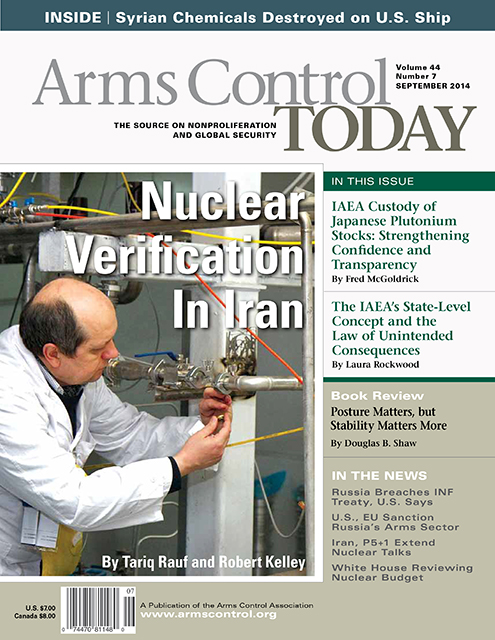"I find hope in the work of long-established groups such as the Arms Control Association...[and] I find hope in younger anti-nuclear activists and the movement around the world to formally ban the bomb."
September 2014
Edition Date
Cover Image

Authored by on September 29, 2014
Authored by on September 29, 2014
Authored by on September 29, 2014
Authored by on September 29, 2014
Authored by on September 29, 2014
Authored by on September 29, 2014
Authored by on September 22, 2014
Authored by on August 28, 2014
Digital Edition - Click Cover for PDFMaking the Most of Your Digital EditionPDF can be downloaded and printed for your personal useUse the interactive cover and table of contents to navigate directly to individual articlesReturn to the table of contents by using the bookmarks provided in the PDF Click here to browse all digital issues of Arms Control Today
